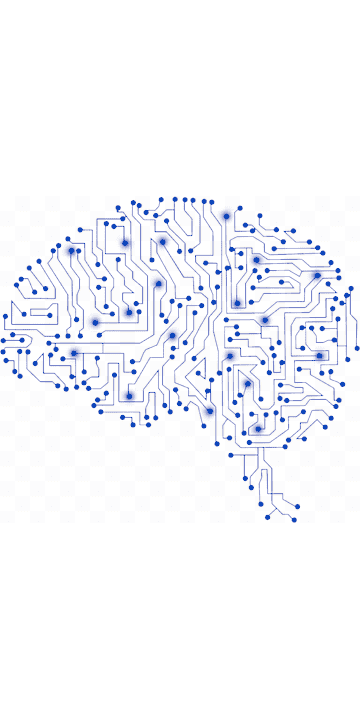
Welcome
One fine body…
© Copyright SolidReturn 2023
Our service is a comprehensive web-based platform that revolutionizes condominium management. It provides seamless communication, efficient organization, and streamlined administration for condo communities. With integrated features such as video conferencing, multilingual translations, and robust management tools, our service empowers residents and administrators to connect, collaborate, and overcome communication barriers. Experience the future of condo living with our cutting-edge solution, powered by AI.
1. We are actively working to enhance our service's infrastructure to meet the rigorous standards of ISO 23007 certification.
2. Feedback Integration: We value your suggestions and comments! Our team is actively working on incorporating your feedback.
3. Data Encryption Notice: Please be aware that during this testing phase, our database is not encrypted. We kindly request that you refrain from using any confidential or sensitive information in your testing activities.
If you're interested in participating as a beta tester or have any questions, please don't hesitate to contact our support team for further assistance (support at actias-gest.net).


The service aims to enhance community engagement and elevate the overall living experience in condominiums. By offering a platform for efficient communication, fostering consensus, and addressing language barriers, the service fosters a sense of unity and collaboration among residents. It bridges cultural gaps and promotes harmonious coexistence within the condominium community. Moreover, by providing accessible and cost-effective tools for condominium management, the service seeks to improve residents' quality of life and create an inclusive and socially connected environment.
With the enactment of Law 8/2022 of the Portuguese Civil Code, condominium assemblies are considered valid whether they are held in person, virtually, or in a hybrid format (with physical and digital attendance). The new law also introduces changes regarding the manner in which summonses can be issued, the form of their execution, and the signing of the minutes. Law no. 58/2019 on data protection also imposes restrictions on the data that condominium management has access to, which are not being complied with by the majority of computer support services for administration. Additionally, a significant percentage of condominiums in cities like Lisbon are foreign-owned. A condominium is a space prone to conflicts arising from different habits and a lack of communication and common sense. The central idea here is to enable the service to be used as a natural communication channel to generate consensus and overcome language barriers.

As the main administrator, the condominium administrator plays a pivotal role in the local social network created by our service. Whether managing a direct management condominium or working for a condominium management company, they have unique responsibilities, including moderating the network and ensuring compliance with community guidelines. In addition to managing the account and onboarding condominiums onto the service, they oversee the smooth functioning of the network, fostering a safe and engaging environment for all residents.
Each individual condominium owner within a condominium must have their own account. This account provides access to their account balance, alerts, notifications, assembly participation, and discussion groups. A representative with a power of attorney can also manage the account on behalf of the owner.
Non-owning residents of the condominium play an active role in the organization and functioning of the community through our service. By creating an account, they gain access to valuable features such as receiving alerts, notifications, and access codes, as well as accessing the condominium regulations. Additionally, if residents are required to contribute to condominium expenses, their account provides convenient access to their account balance, allowing them to stay informed about their financial obligations.
Service providers associated with the condominium can have their own accounts. These accounts grant them access to the specific services outlined in their contract, allow them to view relevant notifications and incidents related to their service provision, and facilitate communication with the residents.

The Organization feature offers comprehensive tools for managing and structuring the condominium. It enables administrators to define the condominium's hierarchy, maintain unit profiles, establish budgets, enforce condominium regulations, oversee construction and service projects, and schedule important activities such as assemblies, maintenance tasks, and services. Additionally, it empowers administrators to generate access tokens for different areas within the condominium, ensuring secure and controlled access.
The Financial Management feature streamlines the financial operations of the condominium and individual owner accounts. It facilitates the maintenance of account balances, enables the creation of budget requests, manages quotations for construction and services, and grants owners access to their account balance and the overall condominium account balances. Additionally, it offers inventory management capabilities for tracking maintenance items and ensuring their availability.


The Communication Management feature promotes seamless communication within the condominium community. It automates the generation of notices and alerts for addressing issues or malfunctions, handles individual payment and insurance-related queries, facilitates the creation of discussion groups for sharing information and engaging in relevant discussions, and enables direct communication with the administrator regarding common area issues or equipment. Moreover, it offers the convenience of scheduling video conferences with neighbors and sending assembly summonses. Additionally, administrators can utilize this feature to conduct meetings with service providers.
The Document Management feature offers a centralized platform for storing and accessing essential documents in a digital format. It ensures easy accessibility for condominium owners to retrieve archived documents, promoting convenience and efficiency in document management.


To register your condominium in our service, simply follow these steps:
Once your registration is processed, you will receive further instructions by e-mail on how to set up and access your condominium's account on our platform.
Our service caters to two distinct profiles: individual condominiums with direct management and condominium management companies. For individual condominiums, the service allows the registration of a single condominium, even if it comprises multiple buildings and units with different configurations. On the other hand, condominium management companies have the flexibility to register multiple condominiums with diverse buildings and units. The differentiation between the two account types is determined during the service activation process, where condominium management companies are required to specify their active company status.
It's important for condominiums with direct management to be aware that utilizing our system incurs a cost for the condominium. Therefore, the decision to adopt the service must be collectively agreed upon and approved during a condominium assembly, ensuring transparency and accountability in the financial aspects of the condominium management.
The service assists the administrator in the following functions:
By assisting with these functions, the service streamlines administrative tasks, promotes transparency, and enhances the overall management efficiency of the condominium.
Organizing and managing the condominium is facilitated if the relationship between the zones and the things that comprise the condominium is as accurate as possible. In the initial configuration, you can start by correctly defining the various zones and associating the fractions within them. Things can be dynamically added as you create service or construction budget requests, when you publish notices or write minutes, or even when you exchange alerts or record incidents. In all of these processes, you will need to identify the thing that is the subject of the service or that generated the incident. At that moment, the system will allow you to add it if it has not yet been registered in the service. During the registration, you will need to locate it within the corresponding zone.
For example, when you receive a message from a resident on the 2nd floor notifying you that the floor lamp is not working, you can register the incident. If the lamp (thing) on that floor is not in the system, you can add it at that time, specifying the corresponding zone.
Unless otherwise specified, the expenses necessary for the conservation and enjoyment of the common parts of the building and for the payment of services of common interest are paid by the condominium owners in proportion to the value of their fractions. However, expenses related to the payment of services of common interest can be shared equally among the condominium owners or in proportion to the speculative enjoyment, provided that the criteria determining their allocation are duly specified and justified. This also applies, with necessary adaptations, to sets of contiguous buildings functionally linked together by the existence of common parts allocated for the use of all or some of the units or fractions comprising them.
Regarding the allocation of expenses related to different flights of stairs or to common parts of the building that exclusively serve a particular condominium owner, they are borne by those who use them. Only the condominium owners whose fractions can be served by the elevators participate in elevator expenses. In the organization of the condominium in the system, it is important to associate these parts with the fractions that use them.
Works that constitute innovations require the approval of the majority of the condominium owners, with that majority representing two-thirds of the total value of the building. The system offers the functionality to schedule works, send budget requests, organize proposals, update quotas, and manage the occurrences associated with the work.
Budget requests and contracts for works or services can be drafted using templates provided by the service, specifying the affected areas. Access to and comparison of proposals can be done by the condominium owners within the system, but the selection and execution of the contract, unless otherwise agreed in the assembly, must be approved in the assembly.
Note that essential and urgent repairs to the common parts of the building can be carried out, in the absence or impediment of the administrator, by any of the condominium owners. In case of emergency, the system allows one of the condominium owners to take responsibility for a contract when the occurrence is classified as an emergency. The classification of an emergency incident is done via email with the consent of the other condominium owners.
It is mandatory to have insurance against the risk of fire for both the individual units and the common areas of the building. During the condominium setup, you will be asked to provide the insurance policy details. This information will be required from the condominium owners to associate the corresponding insurance policy data with the records of their units. The insurance should be taken out by the condominium owners themselves; however, the administrator should arrange it if the owners have not done so within the specified timeframe and for the agreed-upon value in the assembly. In such cases, the system assists in updating the quotas so that the condominium can recover the respective premium from the owners.
In this option, all the bank accounts belonging to the condominium should be identified. It is advisable to have at least one current account, one account for the Reserve Fund (FCR), and one account for the Working Capital Fund. When registering a condominium, a working capital account (cash on hand) is automatically created. The initial balance and the respective date for the Working Capital Fund account should be indicated. This account cannot be deleted.
If there are more than four co-owners in the condominium, the system will exempt the introduction of the Condominium Regulations. If it is not part of the constitutive deed, a set of Condominium Regulations must be drafted to regulate the use, enjoyment, and maintenance of the common areas. The system provides templates for its preparation by the administrator. To facilitate consensus-building before scheduling its approval at the co-owners' meeting, a discussion group is created within the service's communication system. Until the Condominium Regulations are approved, the system includes this resolution in the meeting agenda.
The administration of the common areas of the building is the responsibility of the co-owners' meeting and an administrator. Each co-owner has as many votes in the meeting as the whole units that correspond to the percentage or permillage of their fractions. During the meetings, the system takes this weighting into account when voting on a resolution. Therefore, it is important for the administrator to confirm the value of the percentage or permillage of the fractions according to the constitutive deed.
The meeting is convened by the administrator. It is mandatory to discuss and approve the accounts for the previous year and approve the budget for expenses to be incurred during the year. The meeting will also be convened by the administrator or by co-owners representing at least twenty-five percent of the invested capital. Co-owners can be represented by a proxy. The system allows for the provision of documentation for the meeting and its prior discussion. A discussion group is associated with each meeting scheduled by the condominium administrator, with the agenda made available for review. This allows condominiums to initiate the procedure for convening an extraordinary meeting through the communication module of the service.
The meeting is convened through registered mail or email, as chosen by the co-owners. The notice is sent at least 10 days in advance, or with a convocation notice made with the same advance notice. Once the meeting is convened, a discussion group is created for it in the system. The convocation can be prepared based on existing templates in the service. The system can automatically add to the agenda for discussion the balance value of the condominium, incidents, and missing information in the fraction records. It is important that the organization of the condominium configured by the administrator is approved in the convocation of the first meeting after subscribing to the service.
The system assists in the preparation of the minutes by allowing certain parts of the discussions to be automatically transcribed into text during the meeting. If necessary, the transcription can be translated into Portuguese.
The service is designed to be accessible not only on desktops and tablets but also on Android and iOS smartphones. This compatibility allows users to conveniently manage their condominium affairs on the go, leveraging the portability, real-time communication, and advanced functionalities of smartphones. By catering to the mobile ecosystem, the service offers a seamless and enhanced user experience, ensuring cross-platform integration and empowering users to stay connected with their condominium community anytime, anywhere.

Stay connected with us on social media! Follow our accounts on Facebook, Twitter, Pinterest, and YouTube to stay updated with the latest news, tips, and features of our service. Join our community and engage with other condominium owners and management professionals. Don't miss out on valuable information and exciting updates - follow us today!